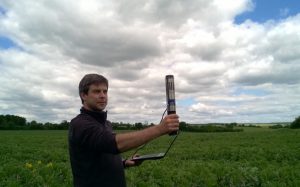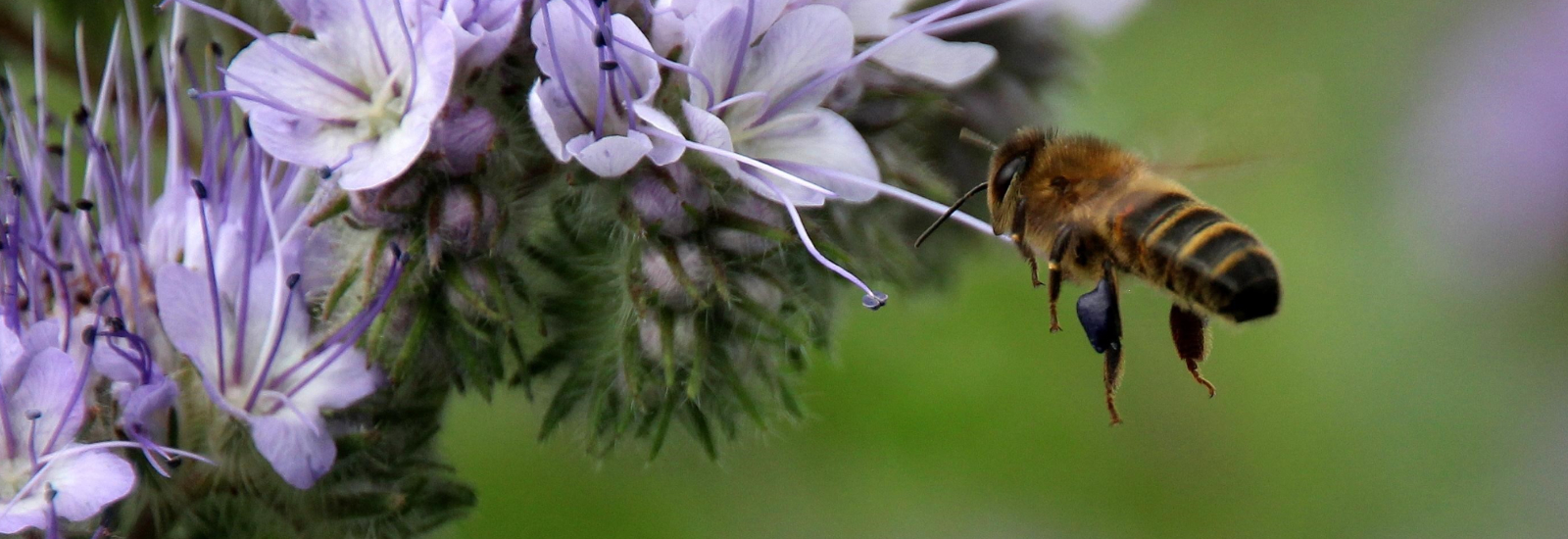Air pollution is an often invisible threat. We know it is damaging human health, but what about its impact on insects? Dr Robbie Girling – University of Reading graduate and now academic – tells CONNECTED how air pollution is causing risks to the ecosystem services which humans rely upon.
Dr Girling studied zoology at Reading after being inspired by a biology teacher who captured his imagination with the subject. “I got really interested in biology at school, and my desire to understand more about ecological processes led me to zoology. I was always interested in how things worked, and that intrinsic interest is what led me to be a scientist,” he reflected.
It was during his degree at Reading that Dr Girling developed an interest in insects. After graduating he undertook a PhD at the University of East Anglia working on ladybirds, then went on to work with moths in California, beetles in Dublin, mosquitoes in Kent and greenfly in Southampton, before he found his way back to Reading.
 In his current role as Associate Professor in Agroecology and Sustainable Agriculture, and Head of the Department of Sustainable Land Management, within the University of Reading’s School of Agriculture, Policy and Development, Dr Girling is researching how ground-level air pollution is impacting on insects and the ecosystem services they provide.
In his current role as Associate Professor in Agroecology and Sustainable Agriculture, and Head of the Department of Sustainable Land Management, within the University of Reading’s School of Agriculture, Policy and Development, Dr Girling is researching how ground-level air pollution is impacting on insects and the ecosystem services they provide.
He explained: “One of my colleagues at the University of Southampton was researching the effects of exhaust pollution on humans. This research got us thinking about the potential impact of pollution on insects. If it is damaging human health, then perhaps it is damaging insects as well?
“The way humans interact with our environment is largely through sight, but with insects a large proportion use smell. Many follow scent trails from other organisms and can rely on these smells more than on vison, or they use smells for long-distance searching and only use their eyes at much closer ranges.
“For example, when honeybees are looking for flowers to pollinate they commonly use floral scents to find patches of flowers, and only once closer do they use vision to pick out individual flowers.”
Following a bee’s nose
Dr Girling explains how pollution is not only endangering human health, but also the health of the insects we rely on to survive.
He said: “My team and I have been researching how different air pollutants react with the environment. When a flower emits an odour to attract an insect it is made up of 10-15 different chemicals, each of which has a different smell. Bees land on a flower, feed on it, learn to associate that combination of smells with the idea that this is a good place to feed, and use this specific odour to find these flowers again.
“A bee’s response to an odour that they know is rewarding is to stick their tongues out when they smell it.
“These odours are complicated, and each species of flower emits a distinct blend containing a different mixture of chemicals, and bees can tell the difference between them. This is why it is so problematic when air pollution interferes with these smells.
“We found in lab experiments that some of these floral chemicals react with common air pollutants and therefore in a polluted environment they will be lost from a flower’s blend.
“As the composition of the blend moves further away from the original chemical components of the flower’s odour, a bee that has learnt the original blend will not recognise it as well. When we presented bees with a degraded blend they didn’t stick their tongues out anymore because they didn’t recognise this as the flower’s odour.”
Having proven this in the lab, Dr Girling and his team decided they needed to undertake field experiments with wild bees. This led to the establishment of a NERC-funded Free-Air Diesel and Ozone Enrichment (FADOE) platform, which is located at the University’s farm in Sonning and enables field-scale evaluation of ozone and diesel exhaust pollution on insect and plant ecology.
Dr Girling explained what happened during their field research: “When floral blends were degraded in the natural environment, we saw a 60% reduction in the number of bees which found the flowers, meaning a reduction in pollination. In addition, the bees that did find the flowers visited far fewer times than normal reducing pollination even further. Therefore, this showed that air pollution reduces pollination efficiency.
“If bees are pollinating flowers less, then this also affects the number of seeds the flowers can produce, which could have a knock-on effect for the whole ecosystem.”
Every voice helps
Dr Girling is hopeful that this research will add to the building body of knowledge that outlines the need to reduce air pollution.
“There’s already been a lot of research in terms of the impact of air pollution on human health and people are taking this on board, but there is less understanding of the impact of pollution on insects, despite the health of the ecosystem being crucial to the resources we need to survive,” he said.
“I hope that the research we are doing now will add to the current body of knowledge in terms of the negative impacts of air pollution, and therefore will create an even stronger case for what we should be doing as a country and globally to reduce air pollution.
“The impact of pollution on insects and biodiversity could affect humans, both through the negative economic effects on farmers – because it may reduce the level of pollination of their crops – as well as the world’s ability to fulfil people’s nutritional needs.”
Dr Girling believes that it’s not too late to change the tide on air pollution and safeguard the future of the ecosystem.
“My passion for academia stems from the desire to develop new research, but also to help people and the world through this research,” he shared. “I hope in this case our findings will be another voice in the argument expressing the wider implications of air pollution beyond what we can currently see.
“It’s not too late to make the changes we need to, and every voice in the argument against this invisible threat helps.”
Discover more about what our inspirational alumni are doing to help tackle pollution.
Photo credits acknowledged to Richard Casebow.




